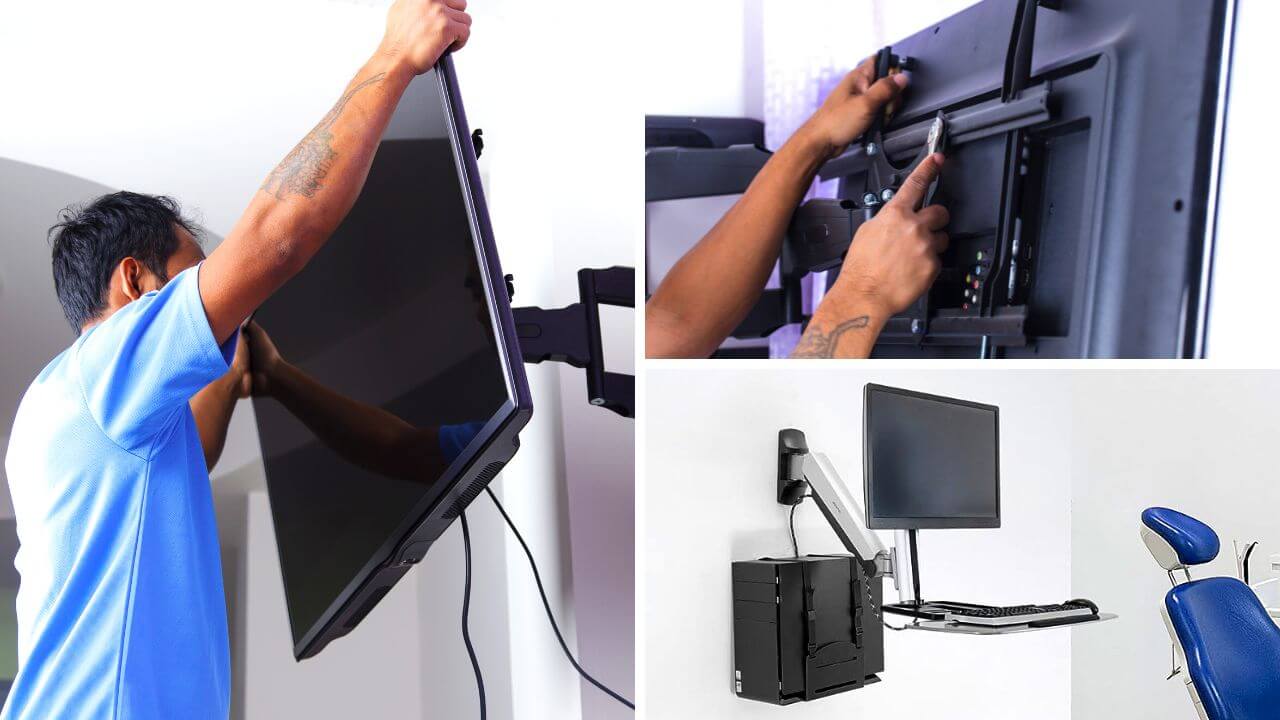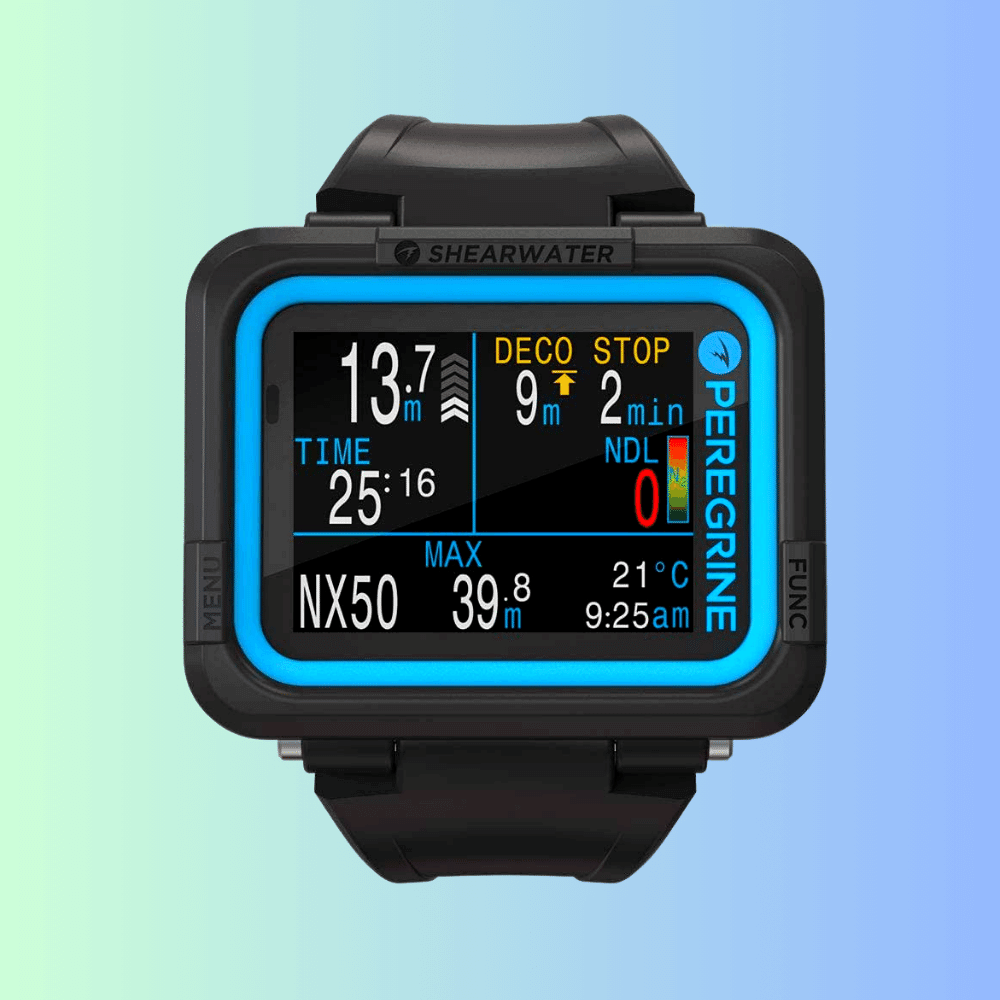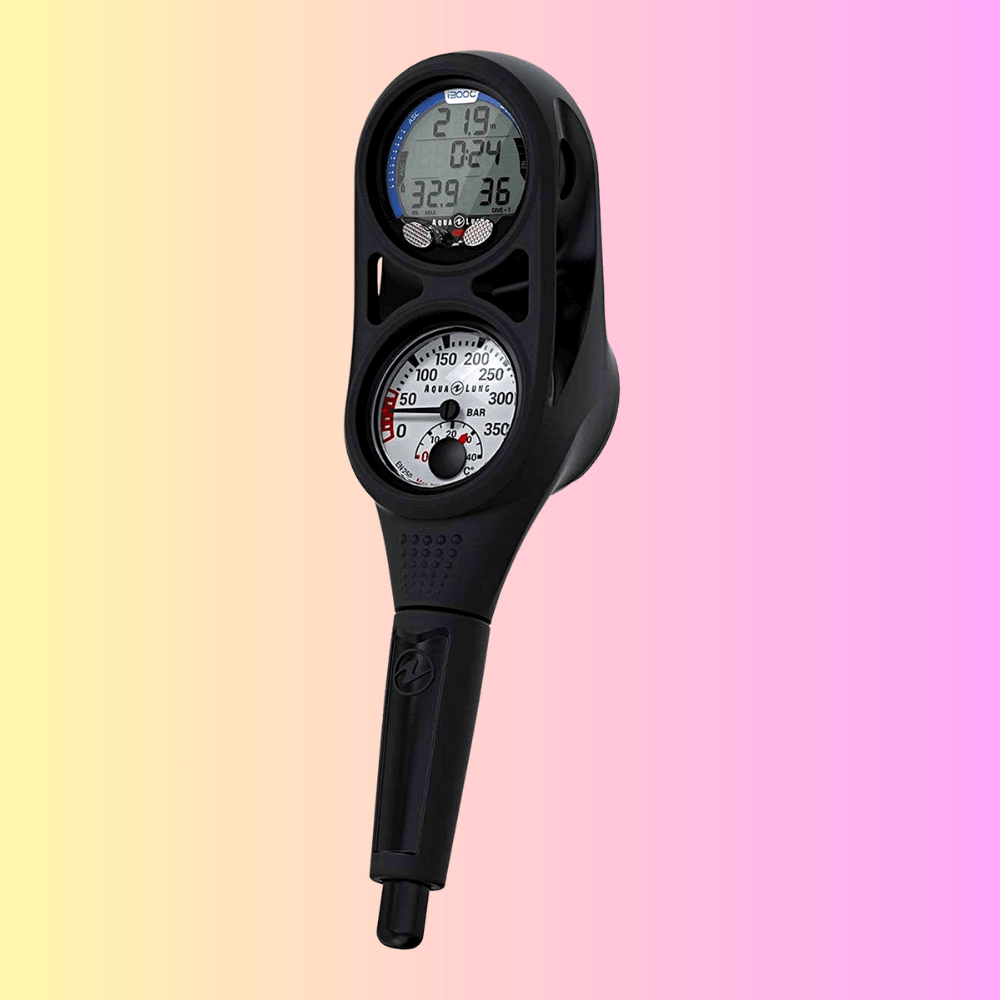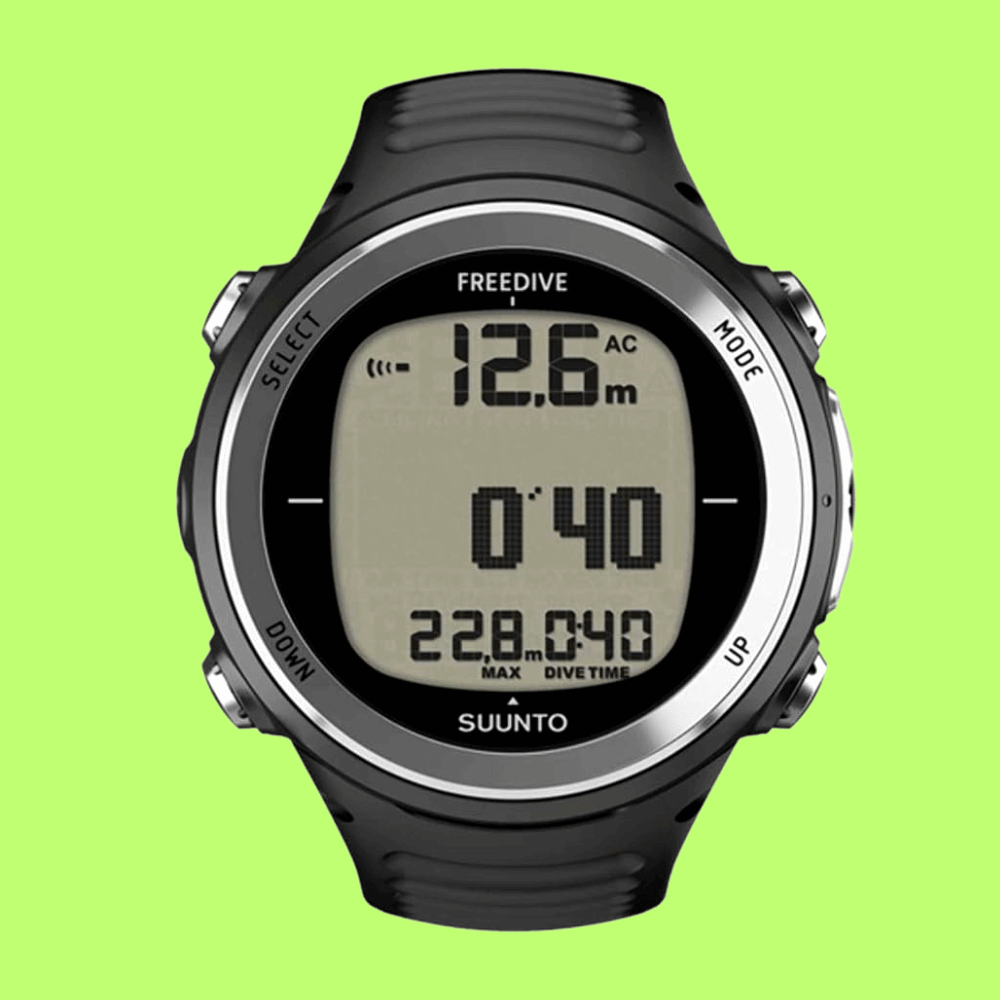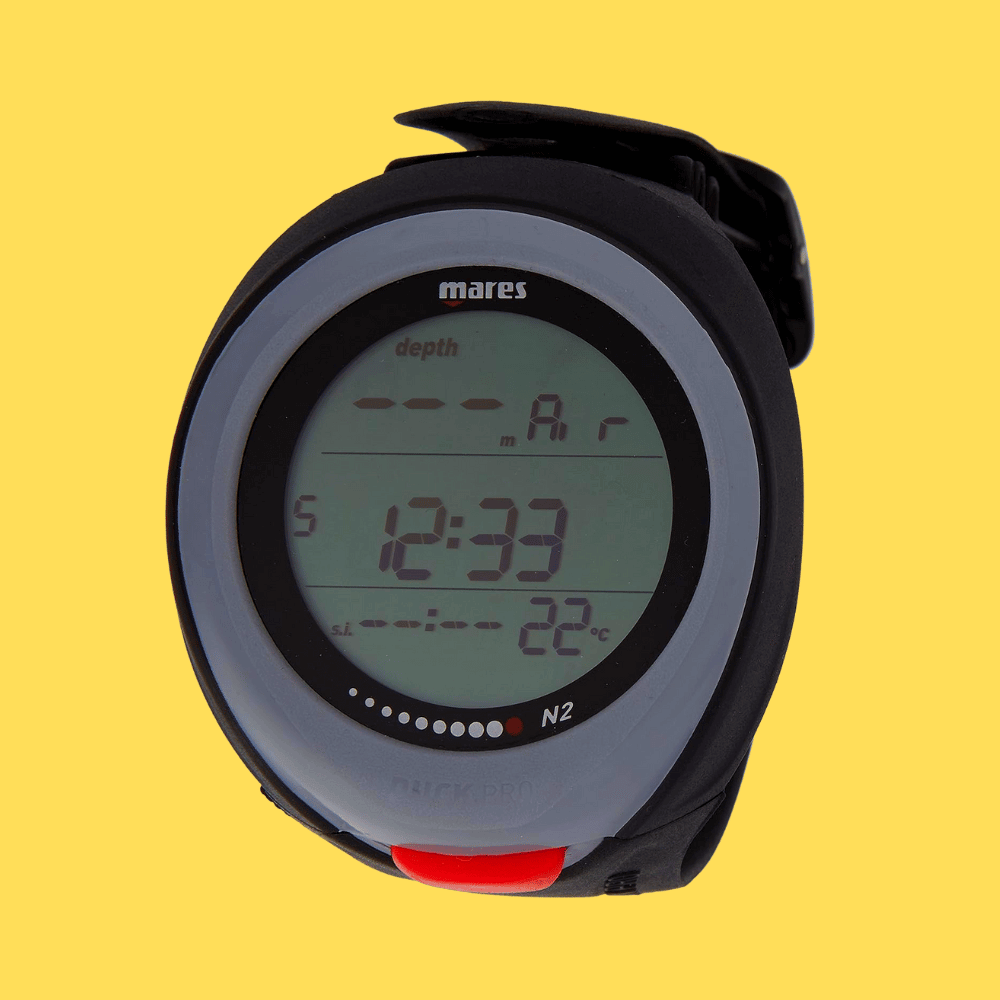Attention all aquanauts and deep sea divers!
Have you ever found yourself wishing that your underwater adventures could be a bit easier? You should check out the best dive computer on the market. It’s a must-have for any serious diver looking to get the most out of their life. This device has been designed to make your depth exploration as effortless and enjoyable as possible, with its enhanced features that are intuitively tailored to fit your needs.
With this dive computer, you can now easily monitor and measure how long it takes before you have to start ascending, allowing for longer excursions at greater depths; enjoy an intelligent decompression system that calculates precise diving profiles; take advantage of advanced technology such as wireless connectivity and syncing capabilities with other dive computers or smart devices; not to mention lightweight construction making it easy for carrying around everywhere!
Shop now if you want to explore deeper than ever before with the world's best dive computer!
How We Choose The Best Dive Computer
Figuring out which dive computer is best for your diving needs can be really confusing. With all the different options and features to choose from, it feels overwhelming to make the right decision.
Poorly informed decisions cost time, and money, and unfortunately can put you at risk underwater. It's important that you invest in a dive computer that meets your needs and matches your experience level as a diver.
Take the guesswork out of choosing the perfect dive computer with our recommendation. Our step-by-step guide helps you select the right one based on price, features, durability, size, and more - so you can get back in the water safely!
Reasons We Love It
Ahoy divers! If you're looking for a reliable dive computer that won't break the bank, the Shearwater Research Peregrine is the one for you. With a two-button interface and a state-aware menu system, navigating through your dive data has never been easier. Plus, the 316 stainless steel buttons give it a slick yet sturdy look.
But wait, there's more! The battery life lasts up to 30 hours on medium brightness, so you can explore the depths without worrying about your computer dying. So, put those cadavers to rest and dive into your next adventure with the Shearwater Research Peregrine.
Things To Know About
The Shearwater Research Peregrine Dive Computer is a must-have for any diving enthusiast. Sporting a package dimension of 6.69 inches L x 4.45 inches W x 4.33 inches H, this dive computer is the perfect fit for underwater explorers of all shapes and sizes. But what sets the Peregrine apart from other dive computers is its inclusion of a USB wireless charging station.
No more fumbling around with clunky cords or charging bricks - this bad boy charges wirelessly and breathes new life into the ancient art of scuba diving. Trust us, once you've experienced the Peregrine, you'll never want to go back to your old, clunky dive computer. So don your wetsuit and dive in - the Peregrine will take care of the rest.
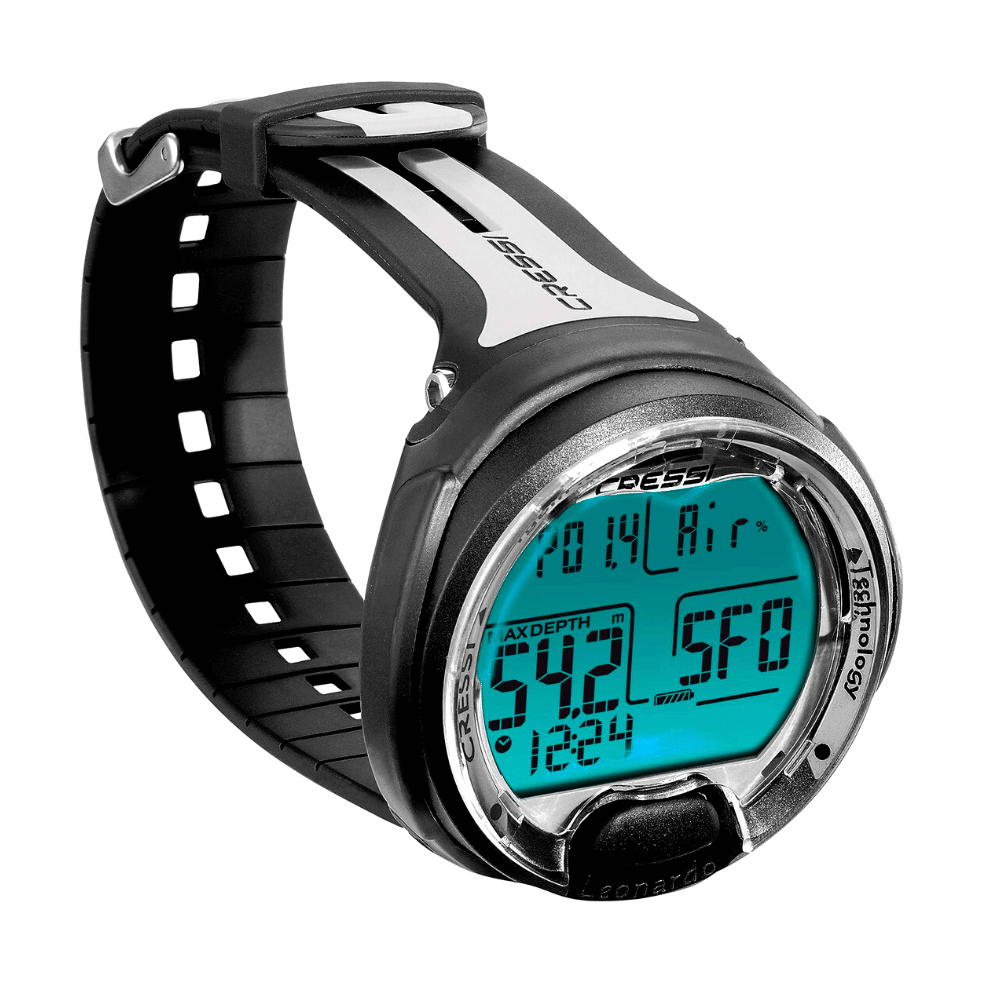
Best Budget-Friendly Dive Computer
Cressi Leonardo Underwater Single Button Diving Computer
Reasons We Love It
There's a lot to love about the Cressi Single Button Diving Computer, but let's start with the obvious: it's incredibly easy to use. Perfect for beginners, this little gadget makes setting Air, Nitrox, and Gauge modes a breeze. Plus, the high-definition screen gives you all the important information you need in large, easy-to-read numerals. But that's just scratching the surface. With FO2 adjustable between 21% and 50% and PO2 adjustable between 1.2 bar and 1.6 bar, you've got all the control you need to stay safe and perform at your best.
And don't forget the handy CNS oxygen toxicity graphic indicator, because who doesn't love a helpful safety feature? So whether you're just starting out in the world of scuba diving or you're a seasoned pro, the Cressi Single Button Diving Computer is definitely worth your attention.
Things To Know About
The Cressi Single Button Diving Computer is a diver's dream come true! With three levels of user-adjustable conservatism, you can choose the appropriate level of safety for your dive. And don't worry about missing any important information, because this computer has easy-to-hear audible alarms and a visual display that's clear and distinct. Plus, you can choose between imperial or metric measurements and keep an eye on your battery life with the indicator.
And speaking of battery life, the Cressi Single Button Diving Computer runs on a CR2431 battery - which is user-changeable, so you're always ready to dive deep. This one-button wonder is the ultimate dive companion that offers convenience and precision in a compact package!
Reasons We Love It
Are you ready to ditch the hassle of outdated dive log books and pens? Say hello to the Aqua Lung i300C Computer - your new dive buddy! Equipped with Bluetooth technology, the i300C offers a seamless wireless exchange of dive log information with the DiverLog app, making those tedious log entries a thing of the past. Plus, with four operating modes (Air, Nitrox, Gauge, and Free Dive), this computer’s got you covered no matter what your dive preferences are.
But that’s not all - the i300C also tracks calculations to allow for easy switching between DIVE and Free modes, giving you the freedom to explore the depths without any worries. So go ahead, dive on in, and discover why the Aqua Lung i300C is the new dive computer you won’t be able to live without!
Things To Know About
Ah, the Aqua Lung i300C Computer. If you’re an avid scuba diver, this is one gadget you need to add to your collection ASAP. Why, you ask? Well, let me tell you. This nifty little device can switch between three gases while you’re diving. Three! That’s like having your own personal genie underwater.
And don’t worry about reading the display in low light — the Aqua Lung i300C has backlighting for easy reading. Plus, it’s compact and easy to carry with you on your diving adventures. So, what are you waiting for? Dive right in and get yourself an Aqua Lung i300C Computer!
Reasons We Love It
We've just discovered our new diving best friend: the Suunto D4F Black Freedive Computer. This little device is an absolute game-changer for all of us freedivers, snorkelers, and spearfishers out there. Firstly, its intuitive apnea timer makes it perfect for tracking our dives, while we focus on exploring the stunning underwater world. Secondly, with a maximum depth of 100m, we can all push our boundaries and dive deeper than ever before.
And finally, its lightweight design means it's portable and unobtrusive, which is perfect for our on-the-go lifestyles. So, if you're looking for a reliable, durable, and fun diving companion, the Suunto D4F Black Freedive Computer is your guy!
Things To Know About
If you're tired of relying on just your wits and breath-holding skills while exploring the deep blue, then the Suunto D4F Black Freedive Computer is going to be your new best friend. This trusty device boasts a sleek and stylish stainless steel design, with dimensions of 5 x 3.6 x 3.5 inches and weighing in at a mere 86 grams - no cumbersome gear weighing you down.
But don't let its dainty size fool you, the D4F offers a variety of helpful features, including adjustable dive alarms, a dive time counter, and a maximum depth display. So whether you're a professional freediver or just starting out, the Suunto D4F will help you dive deep and surface safely.
Reasons We Love It
Ah, the Mares Puck Pro Wrist Dive Computer. What's not to love about it? Firstly, let's talk about its versatility - it's programmable for Nitrox from 21-50%, which means you can stay underwater for longer without having to make multiple stops to decompress. Plus, with its ascent rate indicator, you can ensure you're not surfacing too quickly and putting yourself at risk of decompression sickness.
But perhaps the best thing about this dive computer is its user-friendly design - it's super easy to navigate and understands the needs of divers. And with diver-replaceable batteries, you won't have to worry about running out of juice during a dive. It's clear that Mares has thought of everything with the Puck Pro - now, we just need someone to gift it to us!
Things To Know About
When it comes to diving, safety is key. And what better way to ensure your safety than with the Mares Puck Pro Wrist Dive Computer? With its powerful backlight and Air/Nitrox/Bottom timer modes, you'll always know exactly where you stand. Plus, the temperature display and automatic altitude adjustment make sure you're always comfortable, no matter where you are. And let's not forget about the impressive depth range - 492 feet/150 meters is nothing to sneeze at.
But perhaps the best part of this dive computer is that you can change it between imperial and metric units at the push of a button. It's like having two computers in one! So why settle for anything less than the best? Get the Mares Puck Pro Wrist Dive Computer and dive with confidence.
What To Look For In The Best Dive Computer Guide
1. User-Friendliness
A good dive computer should be intuitive and easy to use. Look for features such as a large, easy-to-read display, simple navigation buttons, and a comprehensive instruction manual.
2. Battery Life
The battery life of the dive computer is an important factor to consider when making your choice. Look for models that have a long battery life so you don't have to worry about running out of power during a dive.
3. Water Resistance
Make sure the dive computer you choose is water resistant to at least 100 meters (330 feet). This will ensure that it can withstand the pressure at deeper depths and keep working properly.
4. Safety Features
Many dive computers come with safety features such as an oxygen sensor or decompression algorithms that help protect divers from decompression sickness (DCS). Look for models that include these features for added protection.
5. Price
Last but not least, consider how much you are willing to spend on a dive computer. There are many models available in different price ranges, so make sure you find one that fits your budget while still providing all the features you need.
The Best Dive Computer FAQs
Are you considering investing in a dive computer, but are not sure which one to buy? You’re not alone. It’s a hard decision because there is so much conflicting advice and information out there.
With so many options on the market, it can be hard to know which features are important, how much you should be budgeting, or even what kind of technology is necessary to stay safe underwater.
Our best dive computers FAQ section will answer all your questions about dive computers and help you make an informed choice quickly and easily!
How long are dive computers good for?
Dive computers are designed to be used for many years, but like any piece of electronic equipment, they need to be regularly checked for accuracy and functionality. Generally speaking, dive computers can last up to around 10 years with proper care and maintenance. It's important to remember that the lifespan of a dive computer depends on how often you use it and where you use it; if you take regular dives in saltwater or other harsh environments, your dive computer won't last as long as if you predominantly take dives in freshwater. So make sure to pay attention to the conditions when taking your next plunge!
Do dive computers have GPS?
Diving computers come in different shapes and sizes, but the features largely remain the same. For instance, many dive computers are now equipped with GPS capabilities. This helps divers record their location while underwater and also assists them with certain safety aspects of dives such as decompression schedules. Of course, these features vary by brand – some offer more advanced GPS features than others; however, most modern diving computers will have a basic integrated GPS feature for tracking locations.
How do I secure my dive computer?
When it comes to securing your dive computer, the best way to do so is by investing in an appropriate waterproof case and/or lock. A quality waterproof case can protect your device from potential water damage, and a reliable lock will ensure that no one else has access to it. Additionally, it's always wise to consider taking measures such as backing up data regularly or using password protection when possible. With these simple steps, you can rest assured knowing your dive computer is secure!
How important is a dive computer?
Dive computers are one of the most important pieces of dive equipment that a diver can own. Not only do they help with tracking dive times and depths, but they also handle decompression calculations, allowing divers to extend their bottom time safely. With features like integrated Bluetooth and GPS capabilities, dive computers provide unprecedented levels of information to the recreational diver - all in an easy-to-use package. In short: without a dive computer, you might as well leave your scuba gear at home! The best beginner dive computers with dive logs and user-replaceable battery include the Cressi Leonardo, Mares Puck Pro, and Aqua Lung i300C.
Do dive computers need service?
Absolutely! Dive computers are like any other piece of equipment: they need some TLC from time to time in order to maintain optimal performance. It's recommended that you service your dive computer every 12-18 months, as the water pressure, debris, and salt deposits can affect its accuracy and functioning. A dive shop or manufacturer technician should be able to easily test all the vital functions on your dive computer and make sure it’s ready for whatever adventures await!
What is the air mode in the dive computer?
Air mode is a feature on your dive computer that allows you to manage the amount and type of air you have in your tank. It indicates when it’s time to turn around, how deep you can go with the tank and other important information related to your dive. With air mode enabled, your gauge will be able to read from an external pressure sensor as well as any changes made in the environment or weather conditions. This gives the diver more control and safety while underwater! So if you're looking for a reliable way to keep track of your air supply during dives, make sure you check out this useful feature on today's modern dive computers! Scuba divers should own their own dive computer with multiple diving modes to stay safe and informed during recreational diving.
What is a deep stop on the dive computer?
A deep stop is an important safety feature of a dive computer that can help to improve a diver's safety. It works by automatically calculating and displaying the depth at which a diver should pause for a few minutes during their ascent from deeper dives. This gives the body time to adjust and off-gas nitrogen without having to manually count or do any kind of calculations. While it is only recommended for diving deeper than 18 meters (60 feet) it adds an important layer of safety and gives experienced divers peace of mind when exploring deeper waters. Technical diving (divers) can use a wireless air integration dive computer with multiple dive modes to monitor their gas consumption and ascent rates, ensuring a safe and enjoyable dive.
How does a dive computer transmitter work?
Dive computer transmitters are remarkable little devices that use wireless technology to relay vital information from underwater to the dive computer itself. The device utilizes an ultrasonic wave, which transmits data such as depth, decompression status, and time within a certain range. This allows you to monitor your dive parameters without ever having to check a gauge or set off alarms while underwater! So next time you're scuba diving, rest assured knowing that your trusty dive computer transmitter is hard at work relaying all the important details of your dive. The Garmin Descent G1 Solar is a versatile air-integrated dive computer that can be used by technical divers, even as their first dive computer.
Final Thoughts About The Dive Computer
It is safe to say that, with some careful consideration, you can find the perfect dive computer for yourself. You may have trouble initially deciding on which one to purchase, but we guarantee there will be one out of the lot that will take your diving experiences to a whole new level. So go ahead and do your research and detailed analysis; see what each dive computer has to offer and why it might be important or useful in your particular situation. In the end, all we want is for you to make an informed decision so you can safely enjoy every dive knowing that you have the best gear for the job!
Don’t forget to check the price on the Amazon.
Thank you for reading this article.
Your Friend,
Karie

